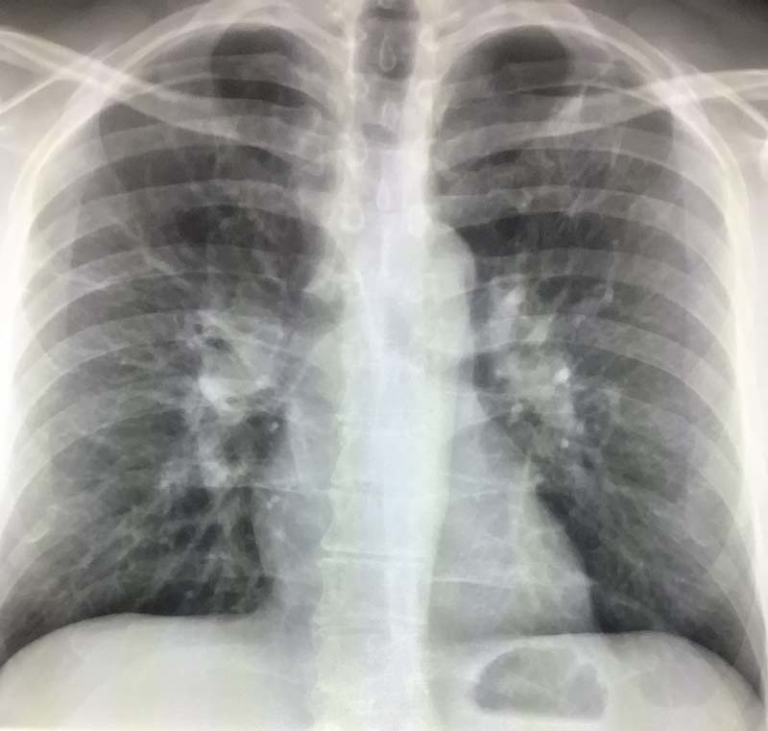Mediastinal Shift
Mediastinal shift is a term mentioned in radiology reports when imaging the chest. It refers to the movement of the mediastinum—the central compartment of the chest containing the heart, trachea, esophagus, and major blood vessels—away from its normal position. This shift often signals an underlying abnormality that requires prompt attention.
Understanding Mediastinal Shift on Imaging
Radiologists identify mediastinal shift primarily through chest X-rays and CT scans. On a normal chest X-ray, the mediastinum appears centered in the chest. When a shift occurs, structures such as the trachea, heart, and major vessels move abnormally to one side.
CT scans provide a more detailed look, allowing radiologists to determine the exact cause and severity of the shift. Imaging tests like X-rays and CT scans help differentiate between a mild deviation and a significant displacement that could compromise lung function and circulation.
Common Causes of Mediastinal Shift
Mediastinal shift is not a disease but a sign of an underlying condition. Some of the most common causes include:
Lung Collapse (Atelectasis)
When a portion of the lung collapses due to obstruction or compression, it pulls the mediastinum toward the affected side. This is commonly seen in post-surgical patients, those with tumors or with mucus plugging.
Pleural Effusion
A large collection of fluid in the pleural space (around the lungs) pushes the mediastinum away from the affected side. This can result from infections, cancer, or congestive heart failure.
Pneumothorax (Collapsed Lung Due to Air Leak)
Air trapped in the pleural space increases pressure and forces the mediastinum to shift. A tension pneumothorax, a life-threatening condition, can cause a dramatic shift and compromise blood flow to the heart.
Large Masses or Tumors
Lung cancer, mediastinal tumors, and lymphadenopathy can physically displace the mediastinum by exerting mass effect. Imaging helps determine whether the shift results from a benign or malignant process.
Diaphragmatic Hernia or Paralysis
Weakness or elevation of the diaphragm on one side can cause the mediastinum to shift. This can be congenital or result from nerve injury or neuromuscular diseases.
How Radiologists Detect Mediastinal Shift
Radiologists assess mediastinal shift by examining key landmarks on imaging:
- Tracheal Position: The trachea should be midline. A significant deviation indicates mediastinal movement.
- Heart and Great Vessels: The heart’s position on X-rays provides clues to mediastinal shift. Displacement can suggest underlying pathology.
- Lung Volume Asymmetry: Reduced lung volume on one side may indicate collapse.
- Diaphragm Contour: An elevated hemidiaphragm may contribute to mediastinal movement.
Symptoms and Clinical Importance Importance
Patients may experience:
- Shortness of breath
- Chest pain
- Cough
- Respiratory distress (in severe cases)
A significant mediastinal shift can compromise blood flow and lung expansion, making it a medical emergency in cases like tension pneumothorax.
Treatment and Management
Managing mediastinal shift involves treating the underlying cause. This may include:
- Lung re-expansion techniques for atelectasis
- Thoracentesis or chest tube placement for pleural effusion or pneumothorax
- Surgical removal of masses or tumors
- Respiratory therapy for diaphragmatic conditions
Personal Insight from Radiology Practice
In my practice, mediastinal shift may indicate an urgent condition requiring treatment. For instance, in post-operative patients, a subtle shift may signal lung collapse. Similarly, in emergency settings, a dramatic shift toward one side can point to a life-threatening pneumothorax requiring rapid decompression.
Conclusion
Mediastinal shift is an important radiologic finding that signals an underlying abnormality. Recognizing its presence and cause on imaging helps guide timely diagnosis and treatment, improving patient outcomes. If you come across this term in a radiology report, it is essential to discuss it with your doctor to determine the next steps.
References:
- https://pmc.ncbi.nlm.nih.gov/articles/PMC4170449/
- https://www.ncbi.nlm.nih.gov/books/NBK559090/
- https://my.clevelandclinic.org/health/diseases/17373-pleural-effusion

